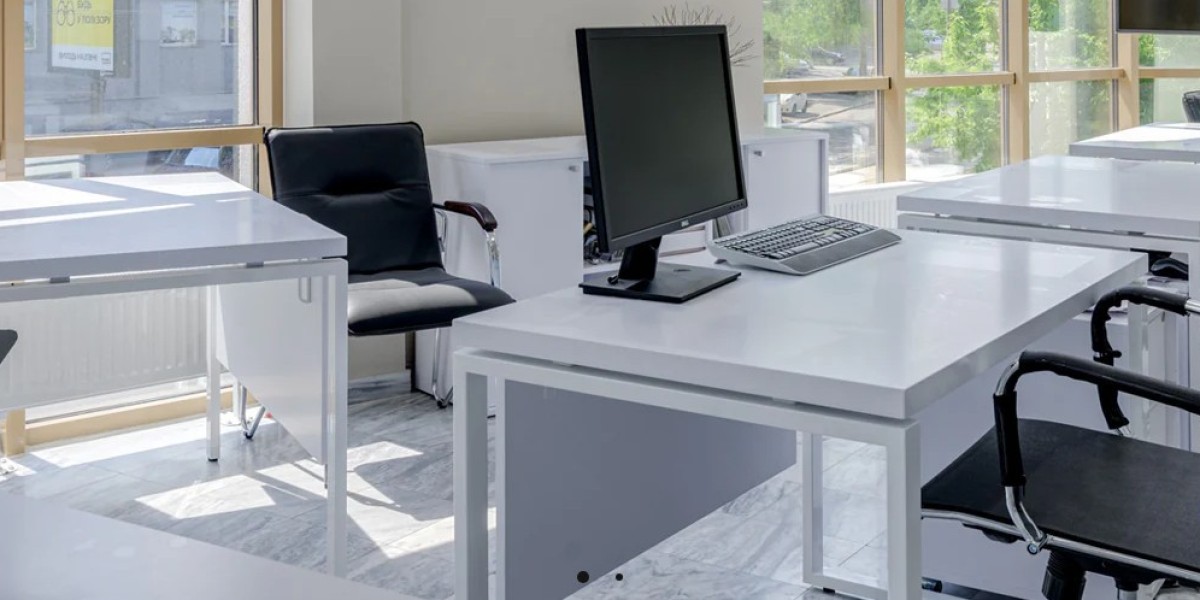Incorporating biophilic design into office furniture is a powerful way to create a healthier, more inspiring workspace that enhances employee well-being and productivity. Biophilic design focuses on integrating natural elements into the built environment, fostering a connection with nature that can reduce stress, improve mood, and boost creativity. Here’s how to incorporate biophilic design into your office furniture:
1. Use of Natural Materials
- Design: Integrate furniture made from natural materials such as wood, stone, bamboo, or rattan. These materials bring a sense of warmth and organic texture to the office, making the space feel more inviting and connected to the natural world.
- Example: Desks, tables, and chairs crafted from sustainably sourced wood or bamboo, with visible grain and natural finishes.
2. Incorporate Greenery into Furniture Design
- Design: Furniture that integrates plants and greenery directly into its design can enhance the biophilic effect. This can include planters built into desks, shelves with plant storage, or living walls that incorporate greenery into partitions or panels.
- Example: Desks with built-in planters or shelving units that double as vertical gardens, creating a lush, green workspace.
3. Prioritize Natural Light
- Design: Position furniture in a way that maximizes access to natural light, which is a key element of biophilic design. Use furniture with reflective surfaces or light colors to amplify natural light and create a bright, uplifting environment.
- Example: Arrange workstations near windows, use light-colored desks and seating, and incorporate reflective materials like glass or polished metal to enhance the distribution of natural light.
4. Include Organic Shapes and Forms
- Design: Furniture with organic shapes and flowing lines can mimic natural forms, making the office environment feel more harmonious and less rigid. These shapes can be inspired by the curves of leaves, the flow of water, or the irregularities of natural landscapes.
- Example: Curved desks, round tables, or chairs with soft, flowing lines that evoke the shapes found in nature.
5. Introduce Water Elements
- Design: Incorporate water features into office furniture or nearby spaces to enhance the calming effects of biophilic design. The sound and sight of water can reduce stress and promote a sense of tranquility in the workplace.
- Example: Small indoor fountains integrated into reception desks, water walls near collaborative spaces, or water-themed partitions.
6. Use Biophilic Colors and Textures
- Design: Choose colors and textures inspired by nature, such as earth tones, greens, blues, and natural wood finishes. These elements can be incorporated into furniture upholstery, finishes, and accessories to create a cohesive biophilic aesthetic.
- Example: Chairs upholstered in fabric with natural textures, desks with stone or wood finishes, and accessories in shades of green or blue that mimic natural landscapes.
7. Enhance Air Quality with Biophilic Furniture
- Design: Furniture that supports air-purifying plants or incorporates materials that promote better indoor air quality can contribute to a healthier workspace. This includes selecting low-VOC (volatile organic compounds) materials and finishes for furniture.
- Example: Desks and shelving units designed to hold air-purifying plants like snake plants or peace lilies, which help to clean the air and improve indoor air quality.
8. Create Dynamic and Adaptive Spaces
- Design: Biophilic design encourages dynamic, adaptive environments that change with the seasons or as needed. Furniture that is modular or movable allows for flexibility and adaptation, keeping the workspace fresh and engaging.
- Example: Modular seating arrangements that can be reconfigured based on the needs of the season, or desks that can be adjusted to different heights to reflect changing light and activity levels.
9. Incorporate Views of Nature
- Design: Position furniture to maximize views of the outdoors, whether it’s a garden, park, or even city trees. If outdoor views are limited, consider using furniture that integrates nature-inspired imagery or patterns.
- Example: Place workstations near windows with views of greenery or use partitions with nature-themed murals or patterns that simulate outdoor scenes.
10. Integrate Nature-Inspired Art and Décor
- Design: Complement furniture with nature-inspired art and décor, such as artwork depicting landscapes, botanical prints, or natural sculptures. This helps reinforce the biophilic theme throughout the office space.
- Example: Wall art featuring natural scenes, desk accessories made from natural materials, or sculptures that mimic natural forms.
Conclusion
Incorporating biophilic design into office furniture is not just a trend but a strategic approach to creating healthier, more productive workspaces. By integrating natural materials, shapes, colors, and elements like greenery and water, businesses can create environments that foster well-being and inspire creativity. The result is a workspace that not only looks beautiful but also supports the physical and mental health of employees, leading to increased satisfaction and productivity.








